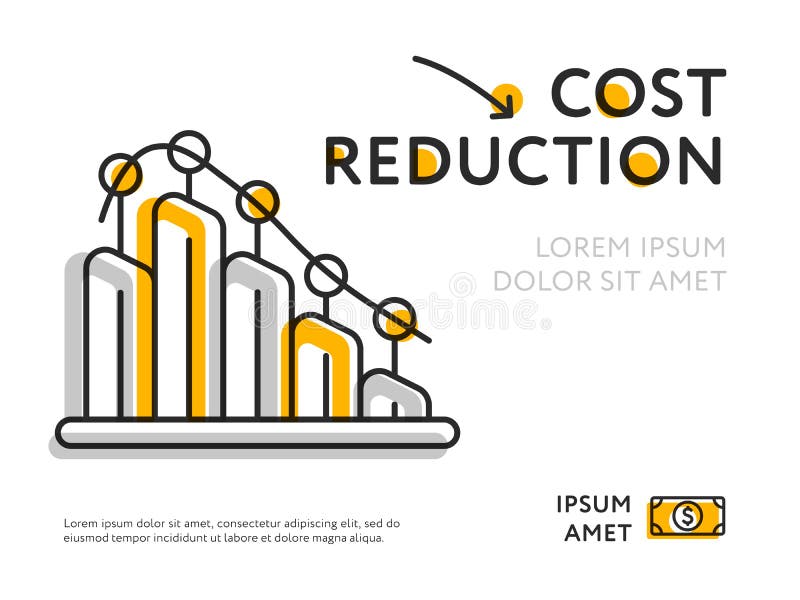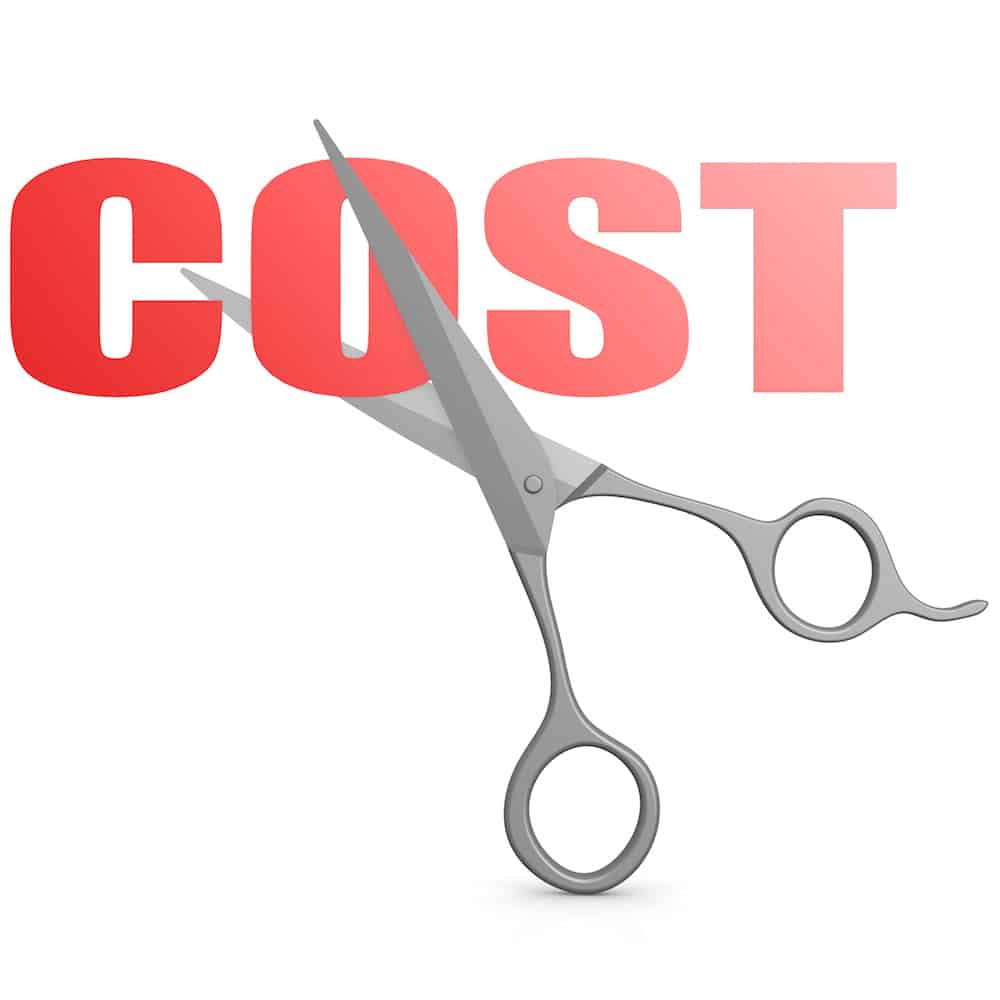The Art of Cost Reduction: An Overview
Cost reduction is an essential aspect of personal finance management, empowering individuals to minimize expenses and optimize their financial resources. By adopting a proactive approach to cutting down on costs, one can achieve financial stability, boost savings, and pave the way for long-term wealth creation. This article will delve into the significance of cost reduction and provide actionable strategies to help you master the art of living within your means.

Assessing Your Spending Habits: A Comprehensive Review
Understanding and analyzing your spending habits is a crucial step towards effectively cutting down on costs. By tracking your expenses and identifying unnecessary expenditures, you can optimize your financial resources and pave the way for a more secure financial future. This section will provide practical tips on how to categorize expenses, identify superfluous costs, and create a comprehensive spending log.
Categorizing Expenses
Begin by categorizing your expenses into essential and non-essential items. Essential expenses include housing, utilities, transportation, food, and healthcare, while non-essential expenses encompass entertainment, dining out, and luxury items. By categorizing your expenses, you can gain a clearer understanding of where your money is going and identify areas for potential cost reduction.
Identifying Unnecessary Costs
Examine your spending log and scrutinize each expense. Determine whether each expenditure is necessary or if it can be eliminated or reduced. For instance, consider canceling subscriptions you rarely use, reducing the frequency of dining out, or swapping brand-name products for generic alternatives. By eliminating unnecessary costs, you can significantly reduce your overall expenses and free up resources for savings or other financial priorities.
Creating a Comprehensive Spending Log
To effectively track your spending habits, create a detailed spending log. This can be done manually using a notebook or digitally through a spreadsheet or budgeting app. Record every expense, no matter how small, and update the log regularly. By maintaining a comprehensive spending log, you can monitor your progress, identify trends, and adjust your cost-cutting strategies accordingly.

Slashing the Big Four: Housing, Transportation, Food, and Miscellaneous
The four major expense categories in personal finance management are housing, transportation, food, and miscellaneous expenses. By implementing actionable strategies to reduce costs in each area, you can significantly cut down on overall expenses and optimize your financial resources. This section will provide practical tips on how to minimize costs in these critical areas.
Housing
Housing is often the largest expense for many individuals. To reduce housing costs, consider downsizing to a smaller home or negotiating a lower rent with your landlord. Additionally, explore options such as house sharing or becoming a homeowner through rent-to-own programs. By reducing housing costs, you can free up resources for other financial priorities.
Transportation
Transportation costs can add up quickly, especially for those who rely on personal vehicles. To reduce transportation expenses, consider carpooling, using public transportation, biking, or walking when possible. Additionally, explore options such as maintaining your vehicle properly to reduce repair costs and comparing insurance rates to ensure you are getting the best deal.
Food
Food expenses can also be a significant portion of an individual’s budget. To reduce food costs, consider meal planning, bulk shopping, and cooking at home instead of dining out. Additionally, explore options such as growing your own produce, using coupons, and purchasing generic or store-brand products. By reducing food costs, you can free up resources for other financial priorities.
Miscellaneous
Miscellaneous expenses can include a wide range of items, from entertainment to personal care products. To reduce miscellaneous expenses, prioritize needs over wants and practice mindful spending. Consider cutting back on non-essential items, such as streaming services or subscription boxes, and explore options such as making your own personal care products or purchasing them in bulk. By reducing miscellaneous expenses, you can free up resources for other financial priorities.

The Power of Negotiation: Lowering Bills and Expenses
Negotiation is a powerful tool that can significantly reduce bills and expenses in personal finance management. By adopting a proactive approach to negotiation, individuals can optimize their financial resources and cut down on costs. This section will provide tips on how to negotiate with service providers, insurance companies, and other relevant entities.
Service Providers
Service providers, such as cable and internet companies, often offer promotional rates to new customers. By negotiating with your service provider, you can often secure a lower rate or additional services for the same price. To negotiate with service providers, research competitors’ rates, prepare a list of your current services and costs, and contact your provider’s customer service department. Be polite, firm, and persistent, and be prepared to cancel your service if necessary.
Insurance Companies
Insurance companies also offer opportunities for negotiation. By reviewing your current policies and comparing rates from competitors, you can often secure lower premiums or better coverage. To negotiate with insurance companies, research the best rates and coverage options, review your current policies, and contact your insurance agent or customer service department. Be prepared to provide detailed information about your coverage needs and any recent changes in your life that may affect your coverage.
Other Relevant Entities
Negotiation can also be effective in other areas of personal finance management, such as medical bills, credit card interest rates, and cell phone plans. To negotiate with other relevant entities, research your options, prepare a clear and concise argument for why you deserve a lower rate or better terms, and contact the appropriate department or representative. Be polite, firm, and persistent, and be prepared to provide documentation or evidence to support your argument.
By adopting a proactive approach to negotiation, individuals can cut down on costs and optimize their financial resources. Negotiation requires research, preparation, and persistence, but the potential savings can be significant. By incorporating negotiation into your personal finance management strategy, you can take control of your expenses and achieve your financial goals.

Embracing a Frugal Lifestyle: Mindful Spending and Savings
The concept of frugal living has gained popularity in recent years as individuals seek to cut down on costs and optimize their financial resources. Frugal living is not about deprivation or living a life devoid of joy, but rather about prioritizing needs over wants, being mindful of spending habits, and making conscious decisions to save money. This section will provide practical tips on how to adopt a frugal mindset, prioritize needs over wants, and practice mindful spending.
Adopting a Frugal Mindset
Adopting a frugal mindset involves changing the way you think about money and shifting your focus from consumption to savings. To adopt a frugal mindset, start by setting clear financial goals, tracking your expenses, and creating a budget. Be mindful of your spending habits and avoid impulse purchases. Instead, take the time to research and compare prices before making a purchase. Consider the long-term value of an item rather than its immediate appeal. By adopting a frugal mindset, you can make conscious decisions to save money and prioritize your financial goals.
Prioritizing Needs Over Wants
Prioritizing needs over wants is a key aspect of frugal living. To prioritize needs over wants, start by making a list of your essential expenses, such as housing, food, transportation, and healthcare. Then, make a list of your discretionary expenses, such as entertainment, dining out, and shopping. Prioritize your essential expenses first and allocate any remaining funds to your discretionary expenses. By prioritizing needs over wants, you can ensure that you are meeting your essential expenses while also cutting down on unnecessary costs.
Practicing Mindful Spending
Practicing mindful spending involves being aware of your spending habits and making conscious decisions to save money. To practice mindful spending, start by tracking your expenses and creating a budget. Avoid impulse purchases and take the time to research and compare prices before making a purchase. Consider alternative options, such as borrowing or renting, instead of buying. By practicing mindful spending, you can make conscious decisions to save money and optimize your financial resources.
Embracing a frugal lifestyle involves adopting a mindset of conscious spending and savings. By prioritizing needs over wants, practicing mindful spending, and making conscious decisions to save money, individuals can cut down on costs and optimize their financial resources. Frugal living is not about deprivation or living a life devoid of joy, but rather about making conscious decisions to prioritize financial goals and achieve long-term financial security.

Alternative Income Streams: Boosting Your Financial Cushion
In today’s economy, diversifying income sources has become increasingly important for individuals seeking to optimize their financial resources. Generating alternative income streams can provide financial stability, security, and flexibility. In this section, we will discuss the importance of diversifying income sources and offer suggestions on how to generate alternative income streams, such as freelancing, selling handmade products, or investing in dividend-paying stocks.
Freelancing
Freelancing is a popular way to generate alternative income streams. Freelancing involves offering your skills or services on a project-by-project basis to clients. Freelancing allows you to work on your own terms, set your own rates, and choose your clients. To get started with freelancing, identify your skills and areas of expertise, create a portfolio showcasing your work, and market your services to potential clients.
Selling Handmade Products
Selling handmade products is another way to generate alternative income streams. Handmade products can range from crafts, jewelry, clothing, and home decor. Selling handmade products allows you to monetize your creativity, hobbies, and skills. To get started with selling handmade products, identify your niche, create a product line, and market your products through online platforms, craft fairs, or local markets.
Investing in Dividend-Paying Stocks
Investing in dividend-paying stocks is a passive way to generate alternative income streams. Dividend-paying stocks provide regular income through dividends, which are a portion of a company’s profits distributed to shareholders. To get started with investing in dividend-paying stocks, research companies with a history of consistent dividend payments, consider your investment goals and risk tolerance, and consult with a financial advisor.
Diversifying income sources is essential for individuals seeking to optimize their financial resources. By generating alternative income streams, individuals can boost their financial cushion, achieve financial stability, and pursue their financial goals. Freelancing, selling handmade products, and investing in dividend-paying stocks are just a few ways to generate alternative income streams. By exploring creative and innovative concepts, individuals can find unique and valuable ways to boost their income and achieve long-term financial success.
Long-Term Financial Planning: Building Wealth and Security
Cost reduction is not just about cutting down on daily expenses but also about building wealth and security in the long term. Long-term financial planning involves creating strategies to save, invest, and manage money to achieve financial goals. In this section, we will discuss the role of long-term financial planning in cost reduction and offer strategies such as saving for retirement, building an emergency fund, and paying off high-interest debt.
Saving for Retirement
Saving for retirement is a crucial aspect of long-term financial planning. Retirement savings provide financial security and stability during the golden years. To start saving for retirement, consider contributing to a 401(k) plan, an IRA, or other retirement accounts. Take advantage of employer matches and tax benefits to maximize your savings. Aim to save at least 15% of your income for retirement, but start with a smaller percentage if necessary and gradually increase it over time.
Building an Emergency Fund
Building an emergency fund is another essential aspect of long-term financial planning. An emergency fund provides a financial cushion during unexpected events, such as job loss, medical emergencies, or home repairs. Aim to save at least three to six months’ worth of living expenses in an easily accessible account. Consider setting up automatic transfers to your emergency fund to ensure consistent savings.
Paying Off High-Interest Debt
Paying off high-interest debt is a critical aspect of long-term financial planning. High-interest debt, such as credit card debt, can drain your finances and hinder your ability to save and invest. To pay off high-interest debt, prioritize it over other financial goals, create a debt repayment plan, and consider consolidating or refinancing it to lower the interest rate.
Long-term financial planning is essential for individuals seeking to cut down on costs and build wealth and security. By saving for retirement, building an emergency fund, and paying off high-interest debt, individuals can create a solid financial foundation for the future. Long-term financial planning involves creating strategies to save, invest, and manage money to achieve financial goals. By incorporating innovative and creative concepts, individuals can find unique and valuable ways to manage their finances and achieve long-term financial success.

Monitoring Progress and Adjusting Strategies: Staying on Track
Cost reduction is an ongoing process that requires regular monitoring and adjustment. To stay on track with your cost-cutting strategies, it’s essential to monitor progress, reassess goals, and maintain motivation. In this section, we will discuss the importance of regularly reviewing and adjusting cost-cutting strategies and provide tips on how to do so effectively.
Monitoring Progress
Monitoring progress is crucial for staying motivated and on track with your cost-cutting goals. Regularly review your spending log and compare it to your budget to identify areas where you are overspending. Use financial tracking apps or tools to automate the process and make it easier to monitor your progress. Celebrate your successes, no matter how small, to stay motivated and committed to your goals.
Reassessing Goals
Reassessing goals is essential for staying on track with your cost-cutting strategies. As your financial situation and priorities change, your cost-cutting goals may need to be adjusted. Regularly review your financial goals and make adjustments as necessary. Consider setting new goals or increasing your savings rate as you make progress in reducing costs.
Maintaining Motivation
Maintaining motivation is crucial for staying on track with your cost-cutting strategies. To maintain motivation, remind yourself of your financial goals and the benefits of cost reduction. Surround yourself with supportive people who share your financial values and avoid comparing yourself to others who may have different financial priorities. Celebrate your successes and find creative ways to stay motivated, such as setting up a reward system or tracking your progress visually.
Monitoring progress, reassessing goals, and maintaining motivation are essential for staying on track with your cost-cutting strategies. By regularly reviewing your spending habits, adjusting your goals, and finding creative ways to stay motivated, you can effectively cut down on costs and achieve your long-term financial goals. Remember, cost reduction is a journey, not a destination. By adopting a proactive and mindful approach to personal finance management, you can optimize your financial resources and build wealth and security for the future.

